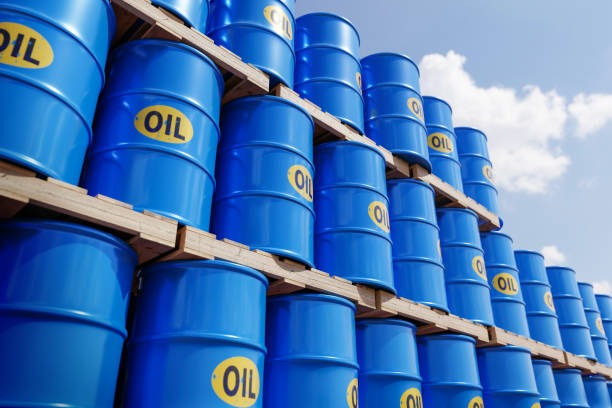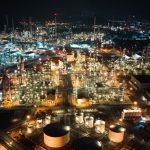Introduction
When you hear “barrel of oil,” you probably think of gasoline for cars. But did you know that crude oil is also used to make plastics, medicines, cosmetics, clothing, and even asphalt for roads?
A single 42-gallon (159-liter) barrel of crude oil is refined into dozens of useful products that power industries, transport goods, and support modern life.
In this article, we’ll break down what’s inside a barrel of oil, explore its many uses, and see how petroleum impacts everyday life far beyond fuel. 🚀⛽
1. What’s Inside a Barrel of Crude Oil? 🔬
Crude oil is a complex mixture of hydrocarbons that must be refined into usable products. A standard barrel contains 42 gallons (159 liters) of unrefined oil, which gets separated through fractional distillation at a refinery.
✅ Breakdown of a Barrel of Crude Oil (Typical Refining Yields):
| Product | Percentage | Gallons per Barrel | Uses |
|---|---|---|---|
| Gasoline (Petrol) | 45% | 19 gallons | Cars, motorcycles, small engines 🚗⛽ |
| Diesel Fuel | 25% | 10.5 gallons | Trucks, buses, trains, ships 🚛🚆 |
| Jet Fuel (Kerosene) | 9% | 3.8 gallons | Airplanes, jet engines ✈️ |
| Liquefied Petroleum Gas (LPG) | 4% | 1.7 gallons | Propane for heating, cooking, and vehicles 🔥🍳 |
| Heavy Fuel Oil | 3% | 1.3 gallons | Power plants, industrial furnaces 🏭 |
| Asphalt & Road Tar | 2% | 0.9 gallons | Paving roads, roofing materials 🚧 |
| Petrochemicals & Lubricants | 12% | 5 gallons | Plastics, synthetic rubber, cosmetics, pharmaceuticals 🧴💊 |
💡 Fun Fact: Even after refining, every drop of crude oil is used—even the leftover residue is turned into petroleum coke for industrial heating!
2. Fuel: The Largest Use of Crude Oil ⛽🚗
Most of a crude oil barrel goes into fuel production, powering vehicles, airplanes, ships, and machinery.
🔹 1. Gasoline (Petrol) – 45% of a Barrel 🚘
✅ Refined into regular, mid-grade, and premium gasoline.
✅ Powers cars, motorcycles, lawnmowers, and small engines.
💡 Global Impact: The U.S. alone consumes about 350 million gallons of gasoline per day!
🔹 2. Diesel Fuel – 25% of a Barrel 🚚
✅ Used in trucks, buses, trains, construction equipment, and ships.
✅ More energy-dense than gasoline, making it ideal for heavy-duty transport.
💡 Why It Matters: Diesel engines are 30-40% more fuel-efficient than gasoline engines, making them essential for global trade.
🔹 3. Jet Fuel (Kerosene) – 9% of a Barrel ✈️
✅ Powers commercial airplanes, fighter jets, and helicopters.
✅ Used in space exploration (rocket fuel additives).
💡 Fun Fact: A Boeing 747 burns one gallon of jet fuel every second!
🔹 4. Liquefied Petroleum Gas (LPG) – 4% of a Barrel 🔥
✅ Includes propane and butane, used in:
- Home heating & cooking (LPG stoves).
- Industrial welding & metal cutting.
- Propane-powered vehicles.
💡 Household Impact: Over 3 billion people worldwide use LPG for cooking.
3. Beyond Fuel: The Many Other Uses of Crude Oil 🏭
🔹 1. Asphalt & Road Construction – 2% of a Barrel 🚧
✅ Used to pave roads, highways, parking lots, and airport runways.
✅ Also found in roof shingles and waterproof coatings.
💡 Global Demand: The U.S. uses 350 million barrels of asphalt per year for roads!
🔹 2. Petrochemicals: The Backbone of Plastics & Chemicals 🏭🧪
Petrochemicals are used to manufacture:
✅ Plastics & Packaging – Bottles, bags, food containers.
✅ Synthetic Rubber – Tires, gloves, shoe soles.
✅ Cosmetics & Personal Care – Shampoo, lotions, deodorants.
✅ Fertilizers & Pesticides – Boosting global agriculture.
✅ Pharmaceuticals – Aspirin, antiseptics, synthetic vitamins.
💡 Did You Know? Over 95% of everyday products contain petrochemicals!
🔹 3. Lubricants & Industrial Oils – 2% of a Barrel ⚙️
✅ Used in engines, machinery, and industrial equipment to reduce friction.
✅ Essential for manufacturing, power plants, and aerospace technology.
💡 Example: Synthetic motor oil, hydraulic fluid, and industrial greases all come from crude oil.
4. How Oil Consumption is Changing: The Future of Crude Oil ⚡🌱
🔹 The Shift Toward Renewable Energy 🌍
✅ Electric vehicles (EVs) are replacing gasoline cars.
✅ Biofuels (ethanol, biodiesel) are blending with petroleum fuels.
✅ Hydrogen fuel & synthetic fuels are emerging as alternatives.
💡 Projection: By 2050, oil demand for fuel may decline, but demand for plastics, chemicals, and lubricants will remain strong.
🔹 Innovations in Oil Refining & Sustainability 🔄
✅ Carbon Capture Storage (CCS) – Capturing CO₂ emissions from oil production.
✅ Refinery Efficiency Upgrades – Reducing waste and pollution.
✅ Recycling Plastics – Developing biodegradable plastics to reduce petroleum waste.
💡 Big Oil’s Shift: Major oil companies (Shell, BP, ExxonMobil) are investing in renewable energy, hydrogen fuel, and carbon-neutral oil production.
Conclusion 🏁
A barrel of crude oil is far more than just fuel—it powers industries, creates essential materials, and supports modern society. While gasoline and diesel dominate today, the future of crude oil will focus more on chemicals, plastics, and sustainable innovations.
🌍 As the world transitions to greener energy, oil will continue to evolve—finding a balance between fossil fuels and sustainability. 🚀⚡


